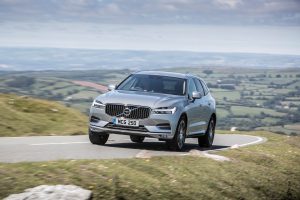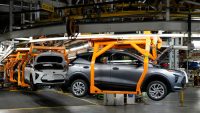Plug-in hybrids are ‘fake electric cars’ built for ‘lab tests, not real driving’ and governments should stop subsiding them, a zero-emission mobility campaign group has said.
New research from Transport & Environment (T&E) has suggests plug-in hybrid vehicles (PHEVs) emit more CO2 than advertised, even when the battery is fully charged.
The campaign group commissioned vehicle testing firm Emissions Analytics to gather data on plug-in hybrid versions of the BMW X5, Volvo XC60 and Mitsubishi Outlander in ‘optimal conditions’ for T&E, and found all produced higher emissions than advertised.
T&E said the three ‘emitted 28-89 per cent more CO2 than advertised… on a fully charged battery’ and ‘three to eight times more than official values’ on an empty battery.
Julia Poliscanova, senior director for clean vehicles at T&E, said: ‘Plug-in hybrids are fake electric cars, built for lab tests and tax breaks, not real driving.
‘Our tests show that even in optimal conditions, with a full battery, the cars pollute more than advertised.
‘Unless you drive them softly, carbon emissions can go off the charts. Governments should stop subsidising these cars with billions in taxpayers’ money.’
SMMT chief executive Mike Hawes said: ‘There will always be a difference between lab tests and real-world use, but the internationally regulated WLTP and RDE tests prove that plug-in hybrids deliver substantial emission reductions compared to pure petrol or diesel equivalents.
PHEV range and performance will continue to improve meaning that, for many drivers, they are the essential stepping stone to a fully electric vehicle
‘PHEVs provide flexibility, with the ability to drive in zero emission mode for typically 25-40 miles – more than ample given that 94 per cent of UK car journeys are less than 25 miles.
‘This makes PHEVs perfect for urban commutes while avoiding “range anxiety” over longer journeys, reducing emissions and improving air quality.
‘We can’t comment on unverified, unregulated tests by commercial entities, but even these have found that PHEVs emit at least 25 -45 per cent less CO2 than their pure ICE counterparts, and of course, they emit 100 per cent less when driven in battery mode.
‘PHEV range and performance will continue to improve meaning that, for many drivers, they are the essential stepping stone to a fully electric vehicle – as recognised by the government, which has excluded them from the 2030 end of sale date for petrol and diesel cars and vans.’
A Volvo Car UK spokesman told the Press Association that all Volvo vehicles ‘fully comply with existing emissions legislation’, adding that ‘our customer field data shows that Volvo plug-in hybrids are driven in pure electric mode an average of 40 per cent of the time, making them a crucial step in our path to full electrification’.

Volvo customers drive in electric mode 40% of the time, according to the firm
Meanwhile, a statement for BMW Group UK noted that official testing is conducted in a laboratory to standardised procedures ‘to allow direct comparison between different cars and different technologies’.
It added: ‘These tests show clearly that PHEV technology, when charged regularly as intended, can save significant fuel consumption and emissions over the equivalent petrol or diesel models.
‘While we cannot comment on the test method used in this report, it is no surprise that different emissions figures are reached, as on-the-road driving conditions are infinitely variable.’
Mitsubishi Motors UK echoed these points, adding: ‘Independent tests can produce unreliable / variable figures depending on conditions and a variety of other factors and we naturally contest any findings where we have no oversight of the testing or methodology.’
It added that much criticism of PHEV powertrains works on the assumption that owners don’t recharge their vehicles, but according to its own research, 92 per cent of Outlander PHEV owners charge multiple times a week.
Meanwhile, owners use electric-only mode for an average of 72 per cent of their commute and 84 per cent of errands and school runs.
- Register as a Car Dealer member and get more out of the website here
- Car Dealer Mag issue 153 is out now – Read it here
- Join our breaking news WhatsApp group – Click here to join now


































